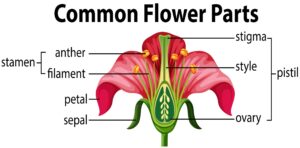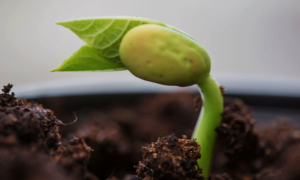Sexual Reproduction :-
Sexual reproduction occurs when the sperm from the male parent fertilizes an egg from the female parent, producing an offspring that is genetically different from their parents.
- Male and female gametes are fuse to form the zygote which develops to form the new organism.
- It is an elaborate, complex and slow process as compared to asexual reproduction.
- All organisms have to reach a certain stage of growth and maturity in their life, before they can reproduce sexually. That period of growth is called the juvenile phase. It is known as vegetative phase in plants. This phase is of variable duration in different organisms
The Stages of Sexual Reproduction :-
1. Pre – fertilization :-
This stage involves the events prior to fertilization. Gamete formation ( Gametogenesis ) and transfer of gametes are the two process that takes place during this stage.
- Gametes are sex cells which are haploid in nature and are distinct in males and females.
- In animals male gamete is called Sperm, these gametes need to be transferred for fertilization. whereas female gamete is called Ovum or Egg.
- In every organism, these gametes form within a special structures. Female gamete is immovable.
- Algae produces Three Types of gametes. ( a ) Isogametes :- These are equal and cannot identified in male and female gametes. ( b) Anisogametes :- These are unequal female gamete larger than male. They are flagellated. ( c ) Heterogametes :-Unequal, female larger, male is flagellated.

- Unisexual animals transfer gametes by sexual intercourse or contact.
- In plant, this is pre – fertilization happens through pollination.
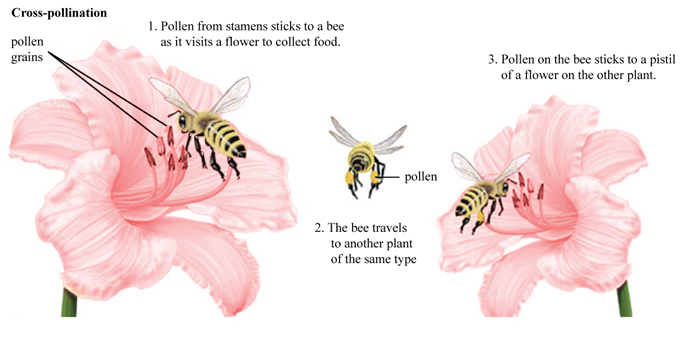
Also read :- Asexual reproduction and their types
2. Fertilization :-
The process in which the haploid male and female gametes meet and fuse together to form a zygote is called fertilization or syngamy .
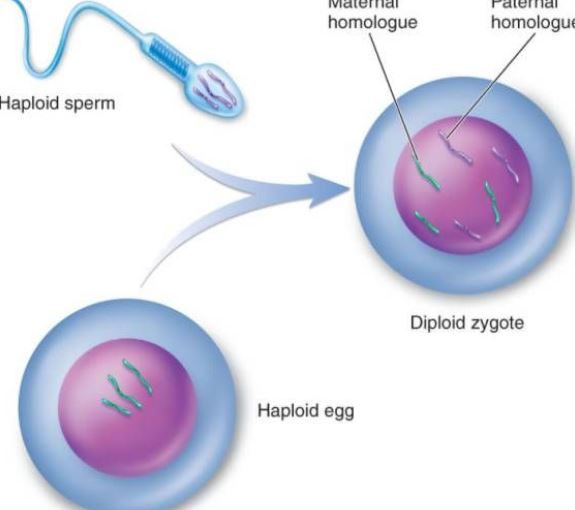
this can occur either outside the body known as External fertilization.
Examples. – Frogs, Fishes,Algae etc.
Or inside the body known as Internal fertilization.
Examples. – Reptiles, Birds,Mammals, Terrestrial plants.
Most of the aquatic animals and plants show External fertilization, A large number of eggs need to be fertilized in this method because most of the fertilized eggs get washes away by water. A large number of eggs ensures the survival of some of the offspring.
But there is no need to produce a large number of eggs in Internal fertilization.
3. Post – fertilization :-
Fertilization results in diploid zygote formation eventually, the zygote divides mitotically and develops into and embryo this process is called Embryogenesis.
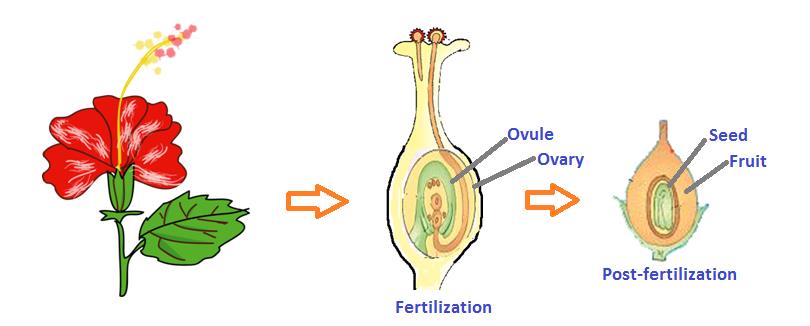
During embryogenesis, cells differentiate and modified accordingly.
- Zygote development depends on the Organism and its life cycle.
- Animals are classified into Oviparous and Viviparous based on whether the zygote develops outside or inside the body respectively.
- In angiosperm, zygote develops into the Ovary and Ovary transforms into Fruit while Ovules develop into seeds.
Advantages of Sexual Reproduction :-
- It creates Genetic diversity within a species. But in Asexual Reproduction a direct copy, a clone is produced.
- There is a natural level of disease resistance throughout the species.
- Genetic variation can lead to Evolutionary advancements.
- It is a rewarding experience. sexual reproduction makes those experiencing it feel good. it stimulates the pleasure centres of the brain so that more is wanted.
- It can encourage the growth of brain cells. Sexual activity increases the production of brain cells.
- It improves health. In human sexual reproduction is directly linked to better health.
Disadvantages of Sexual Reproduction :-
- It takes time and energy to find a mate and reproduce.
- Reproduction through sexual means is uncertain.
- Favourable Genetics might not be passed to the offspring. The offspring of two parents receives a combination of their Genetics.



